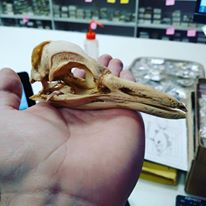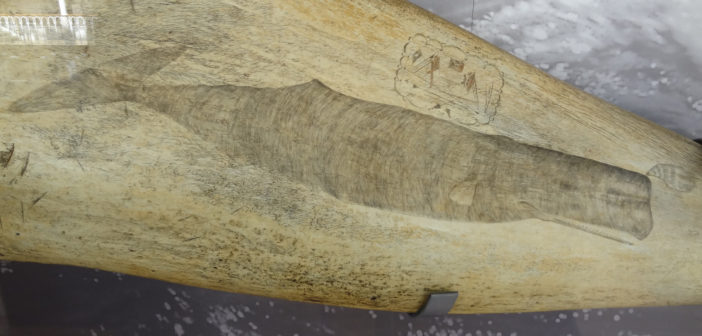Zooarchaeology — the study of human and animal relationships throughout history and prehistory — can offer a great deal of insight to the ever expanding field of animal conservation, our understanding of how humans have changed aspects of the natural environment, and how we have altered aspects of animal ecology. This article presents an overview of how zooarchaeological data can be applied to current animal conservation research and outreach, and to help force legislative and social change regarding these matters. This paper, which is an abridged and simplified version of a paper I recently completed for one of my courses, hits at many of the most pertinent reasons for my own work as a zooarchaeologist.
Throughout the length of human existence, we have impacted various aspects of the natural environment around us. We have impacted the physical landscape, the geographic distribution and decline in populations of plant and animal species, and, with regards to a select few species, their overall morphology (i.e. domesticated animals). At the present time, there is wide interest throughout many scientific disciplines (i.e. biology, animal conservation, economics, genetics, and geology) regarding anthropogenic effects on the global climate and environment, and how ecosystems have responded to such changes. This interest is essential in coming up with methods and ideas to combat harmful anthropogenic changes. I believe zooarchaeological research can also contribute to this fight, as it can show how long and in what ways humans have been impacting the environment throughout history.

Skull from an adult African penguin (Spheniscus demersus)
Understanding how humans have affected animal population, biogeography (the total geographic range of an animal), and general anatomical morphology is essential in order to aid in the conservation of animal species globally, as well as maintain a sustainable degree of biodiversity. Until recently, much of the conservationist literature concerned with anthropogenic effects on animals has been reliant on historical records and scientific censuses. These have been used to create a baseline to gauge long-term effects of human impact on animals. The conservationist literature that is commonly used can be highly variable in its temporal breadth and overall quality of data, which often skews scientific interpretation of anthropogenic impacts.
The discipline of zooarchaeology offers a unique perspective on gauging human effects on animals and the environment, as zooarchaeologists deal with animal remains from many phases throughout human history. As zooarchaeology provides the time depth (the ability to look further back in time than the use of historic texts allow) required to make more informed inferences regarding human impact, it would seem reasonable that this data should be considered and utilized by animal conservationists when trying to evaluate past animal populations. In addition to this long time depth, zooarchaeology can also contribute insight into various areas of animal conservation research including biogeography, population, understanding trade of specific animals, seasonal migration patterns, and the physical size of individual species.
Since zooarchaeological data can determine the rough range of animal species in the past, this information can be used by conservationists when attempting to determine what kind of ecology and climates certain species resided in prior to human arrival, along with understanding which areas would best allow for the reintroduction of these species. This data also has implications for animal translocation (the artificial relocation of a species to a new environment that minimizes human impact), which is becoming a more common method in animal conservation.
Conservationists can also use zooarchaeological data to figure out the approximate population of many animal species in historic and prehistoric times. This information can be used to determine a baseline of what the populations of animal species were prior to human influence. While baselines will be different for every species due to a myriad of factors, including the spread of humans across continents, they are in some senses comparable and can be used by conservationists and zooarchaeologists to better understand how we have impacted animal populations.
Zooarchaeological data can also be used to infer how the trade of animals in historical contexts has led to depressions and resurgences in populations of animals. Various studies utilizing zooarchaeological information have revealed that trade, specifically of marine fish and mammals, has significantly affected the overall populations of animals over time, gradually shifting the focus of commercial fishing from less populated species to other species which are more abundant.
Biomolecular studies – studies examining the chemical makeup of animal remains – are increasingly used within archaeology, and their findings are starting to be used to a greater extent in animal conservation. Various biomolecular methods have been employed by zooarchaeologists to better understand animal ecology and diet, animal evolution, and to assess the presence of animals in sites. These methods include analyses of ancient DNA (aDNA), which can be used in understanding evolution and assessing presence; stable dietary isotopes, which can be used to determine ecology and diet; and lipids (fats) which can be utilized to understand how animals were exploited by humans. aDNA and stable isotopes are the most applicable to animal conservation as they can both be broadly interpreted by conservationists to better understand biogeography, animal ecology, and evolutionary processes. From an environmental perspective, these analyses can also better our understanding of how humans have impacted climate change, as many of our actions have affected the climate through chemical means.
A notable limitation of using zooarchaeological information for animal conservation purposes is that by definition, archaeological remains are created by human activity. This fact presents a likely bias towards the representation of particular animals that are more easily exploited by humans (e.g. domesticated animals, deer, fish, and many birds). The archaeological record therefore does not show all animals present within a given environment. This may not necessarily be a problem for conservationists focused specifically on humans’ direct impact on animal populations. Nonetheless, for animal species that are not directly exploited by humans, it is hard to determine changes in their overall population over time through zooarchaeological means.
In my opinion, zooarchaeological information that relates to animal conservation has implications outside of the sciences. Activists working in animal welfare and wild animal protection could benefit from consulting archaeological studies, and citing their findings to push for legislation that will affect meaningful change in agricultural policies and better enforce wild animal protection measures.
To summarize, studying the past can play an important role in animal conservation, by clarifying how humans have impacted animals in a wide range of environments over time. This information can also be used in assessing how and where to repopulate vulnerable species and how to minimize human impacts. I personally suggest that increased funding towards zooarchaeological studies would be highly beneficial in aiding animal conservation and helping to change attitudes towards anthropogenic climate change.
A Note from the Author:
To better understand animals as they existed in the past, appropriate anatomical material is necessary for comparison to identify, age, and sex animal remains found in archaeological contexts. Zooarchaeologists and zoologists are committed to not harming living animals to gather comparative specimens (Wolverton 2013). Culling animals for scientific purposes is not in my opinion an ethical act. I personally have worked with museums, conservationists, marine mammal stranding networks, park rangers, and road workers (receiving the remains of animals that have been killed by cars) to acquire animal specimens that have died either through accidental or natural means. I believe that despite the clearly unfortunate deaths of these creatures, using their remains for zooarchaeology is important both to understand the lives of animals in the past, and to protect others of their species in the future. Questions regarding my specimen collection procedures or methodology are always welcome.
References Cited:
Alter, S.E., Newsome, S.D. and Palumbi, S.R., 2012. Pre-whaling genetic diversity and population ecology in eastern Pacific gray whales: insights from ancient DNA and stable isotopes. PLoS One, 7(5), p.e35039.
Barrett, J.H., Orton, D., Johnstone, C., Harland, J., Van Neer, W., Ervynck, A., Roberts, C., Locker, A., Amundsen, C., Enghoff, I.B. and Hamilton-Dyer, S., 2011. Interpreting the expansion of sea fishing in medieval Europe using stable isotope analysis of archaeological cod bones. Journal of Archaeological Science, 38(7), pp.1516-1524.
Brown, T.A. and Brown, K., 2011. Biomolecular archaeology: an introduction. John Wiley & Sons.
Goudie, A.S., 2013. The human impact on the natural environment: past, present, and future. John Wiley & Sons.
Lyman, R.L., 1996. Applied zooarchaeology: the relevance of faunal analysis to wildlife management. World Archaeology, 28(1), pp.110-125.
Maibach, E., Myers, T. and Leiserowitz, A., 2014. Climate scientists need to set the record straight: There is a scientific consensus that human‐caused climate change is happening. Earth’s Future, 2(5), pp.295-298.
Orton, D.C., 2016. Archaeology as a tool for understanding past marine resource use and its impact. In Perspectives on Oceans Past (pp. 47-69). Springer Netherlands.
Sinclair, A.R.E., 1998. Natural regulation of ecosystems in protected areas as ecological baselines. Wildlife Society Bulletin, pp.399-409.
Stahl, P.W. (2014). Historical ecology and environmental archaeology. In C. Smith (ed.) Encyclopaedia of Global Archaeology. pp. 3396-3403. New York: Springer.
Wolverton, S. and Lyman, R.L., 2012. Introduction to applied zooarchaeology. Conservation Biology and Applied Zooarchaeology, edited by S. Wolverton and RL Lyman, pp.1-22.
Wolverton, S., 2013. Data quality in zooarchaeological faunal identification. Journal of Archaeological Method and Theory, 20(3), pp.381-396.
Featured image: scrimshaw carving of a sperm whale on jaw bone at the Museum of Scotland, Edinburgh. Credit Jim Forest, CC BY-NC-ND 2.0





